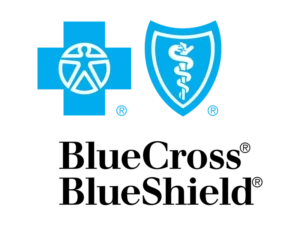Mental Health Support for Teens Recovering From a Nervous Breakdown

It can be tricky to identify and act quickly on teen mental health struggles. Often, it’s at the breaking point that the telltale signs all come together. But outcomes when recovering from a nervous breakdown are typically best when signs are spotted early.
In 2021, the CDC reported that 30% of teen girls and 14% of male teens had seriously considered suicide, which is a sobering sign of how overwhelmed some young people feel.¹ For many, emotional pressure builds slowly until the weight becomes too much. When this happens, the result can be a full emotional collapse, which is what some call a “nervous breakdown.”
Although not a clinical diagnosis, a nervous breakdown describes a point when the mind and body become so overwhelmed that daily functioning is disrupted. Further, this kind of crisis doesn’t resolve on its own. It requires support, structure, and time to rebuild.
If you’re concerned about a teen’s mental well-being, professional support is available to you. This guide can also bridge the gap, exploring…
- What a nervous breakdown looks like in teens
- The common causes and triggers of a teen mental health breakdown
- Tips for recovering from a nervous breakdown
- Types of therapy for post-breakdown teens
- How to support teens in distress
- How Mission Prep can provide post-crisis youth wellness support

What Is a Nervous Breakdown in Teens?
A nervous breakdown in teens typically isn’t one single big event. It’s a tipping point, often the result of months – or even years – of emotional overload. For instance, school pressure, social dynamics, identity struggles, family stress, and unresolved trauma can mount up until the mind and body hit a wall.²
Clinically, what many people call a “nervous breakdown” may involve symptoms of anxiety, depression, panic disorder, or even dissociation. But in teens, such issues can present subtly, such as:
- Skipping school
- Suddenly withdrawing
- Becoming irritable
- Disrupted sleep
- Headaches and stomach aches
- Inability to manage seemingly simple tasks
A nervous breakdown reflects a system in distress, both emotionally and physiologically. When a teen reaches this point, they need more than encouragement to “snap out of it.” They need safety, support, and help creating a path forward. This is where professional youth mental health recovery steps can help.
Causes and Triggers of Teen Mental Health Breakdowns
As mentioned, a mental health breakdown in a teenager usually builds over time. Teens may hold it together on the outside for weeks or even months, but underneath, the nervous system stays locked in fight, flight, or freeze mode.
Several triggers tend to show up in youth mental health recovery stories and often include the following factors.
1. Academic Overload and Pressure to Perform³
If a teen is high-achieving, they may be sensitive to constant deadlines and others’ expectations. This may lead to overworking and little to no time for rest. When the body stays wired and sleep becomes irregular, even small setbacks can feel overwhelming. The line between burnout and breakdown becomes thin, and can be stretched further when perfectionism and fear of failure are part of the problem.
2. Ongoing Social Stress
Social stress doesn’t always have to involve bullying or being ousted from a friend group. Sometimes it’s more subtle. For instance, some teens may feel left out of group chats or like they’re carrying the emotional load in their friend group.⁴ In fact, even when peers are kind, the fear of not belonging can quietly chip away at a teen’s sense of safety.
3. Family Instability
Consistent stress at home can have a damaging effect on a teen. If there’s underlying tension, struggles with emotionally unavailable caregivers, or changes in the family dynamics, teens may struggle to cope emotionally.⁵ When teens don’t feel emotionally safe or like their needs are being left unmet, their well-being can start to suffer.
4. Identity Confusion
In adolescence, teens often grapple with questions about who they are, what they value, and whether they fit in with those around them.⁶ Whether it’s gender, culture, faith, or just a general sense of self, identity development can feel turbulent in these years. When the gap between internal experience and external expectations widens, breakdown can feel like the nervous system’s only way to say, “I can’t keep doing this.”
5. Chronic Sleep Disruption
Lack of quality sleep doesn’t just make teens feel tired; it interferes with emotional regulation, impulse control, memory, and resilience.⁷ When the brain doesn’t get the rest it needs, everything else starts to unravel more easily.
6. Acute Stress or Unresolved Trauma
Major life events, sudden losses, or early unresolved trauma can sit beneath the surface until something in the moment brings it back up. Teens with trauma may seem “high-functioning” – but consistent triggers could lead to collapse. Panic attacks, sensory overload, or sudden withdrawal may be signs of deeper distress such as trauma.⁸
Recovering from a Nervous Breakdown
For teens recovering from a nervous breakdown, healing can feel slow, unpredictable, and deeply personal. But with the right support, recovery can become a turning point.
After a breakdown, the nervous system often stays on high alert. Teens might feel shaky, foggy, tearful, or exhausted for days or even weeks. This is a sign the body is still trying to feel safe again.⁹ Therefore, emotional recovery strategies often begin with regulation. This can be done through several steps, including the following.
Creating a Safe Environment
Before anything else, teens need to feel safe – internally and externally. For instance, a professional may recommend that school expectations be lessened temporarily to reduce pressure. Adjusting social obligations and making changes to their physical environment might also be good first steps. In other words, recovery can start when the nervous system stops bracing for danger.
Rebuilding Stability Through Routines
Getting back to routine doesn’t mean returning to full capacity right away. For some teens, simply waking up at the same time each day and taking a morning shower is a win. Others might start with 20 minutes of schoolwork at a time. The goal is to help them slowly reconnect with structure, but without the pressure that contributed to the breakdown in the first place.¹⁰
Resting to Recover
In a culture that often treats productivity as proof of recovery, it’s important to remember that rest is not avoidance, but rather a form of repair. Brains that have been under chronic stress need sleep, calm, and downtime to rewire.¹¹ Giving teens full permission to rest is one of the most powerful tools in emotional recovery.
Tracking Triggers and Signals
Self-awareness is an essential part of growing and healing.¹² Part of teen healing after a breakdown is learning how to notice what stress feels like before it becomes overwhelming. This might involve journaling, body scans, or simply checking in with a trusted adult when emotions feel overwhelming. These early steps lay the groundwork for teen resilience building and self-trust.
Types of Therapy for Post-Breakdown Teens
Every teen responds to therapy differently; what works for one teen may not work for another. This is why it’s important to work with a professional team that can assess your teen’s needs and recommend the appropriate therapy approaches.
Some common evidence-based approaches that teens respond well to include:
- Cognitive behavioral therapy (CBT): CBT helps teens recognize and reframe unhelpful thought patterns that often fuel anxiety, depression, or shame after a mental crisis.¹³ It’s one of the most common youth mental health recovery steps and supports emotional recovery strategies by building healthier internal dialogue and practical coping tools.
- Dialectical behavior therapy (DBT): DBT is especially helpful when teens struggle with emotional overwhelm, impulsivity, or self-harming behaviors. It teaches key skills like distress tolerance, mindfulness, and emotion regulation, which are tools that help teens bounce back from stress and prevent future breakdowns.¹⁴
- Trauma-informed therapy: For teens whose breakdowns are linked to grief, abuse, or chronic stress, trauma-informed therapy offers a safe and paced approach to healing. It supports nervous system regulation and can include techniques like EMDR or somatic work, which gently help the body and brain recover from traumatic overwhelm.¹⁵
- Family therapy: Involving the whole family in treatment may help shift patterns that could have contributed to the breakdown. Family therapy gives parents and caregivers tools to support teen recovery while creating a more emotionally responsive home. It’s also a space for repairing trust and improving communication.¹⁶
- Group therapy and peer support: Sometimes healing happens faster when teens realize they’re not alone in their experiences. Group therapy offers connection, perspective, and accountability, all of which are key parts in restoring mental balance.¹⁷ Shared experiences can build teen resilience and remind them that recovery is possible, even after a crisis.
How to Support Teen Recovery: Tips for Parents
While therapy is the “go-to” when it comes to helping a teen in mental distress, it’s not the only route that recovery can take. Teens can also be taught life skills and coping strategies to help them manage everyday life. In fact, these skills often work well in complementing therapy.
The following are some practical ways parents, caregivers, and trusted adults can help support emotional recovery strategies and rebuild trust in the healing process:
1. Validate, But Don’t Try to Fix
It can be tempting to try to solve problems for a teen recovering from a nervous breakdown. But, while you can guide them towards support, what a teen might need most is a listening ear. Validate their feelings without minimizing or rushing to solve. Validation helps them feel safe, which is foundational for post-crisis youth wellness.
2. Encourage Self-Care Without Pressure
Support self-care after a mental crisis by modeling it and making it accessible. Invite them to walk, rest, or journal with you, but avoid pushing. The goal is to rebuild energy, not add new tasks. As mentioned earlier, routines are integral to stability, so perhaps consider factoring a self-care regime into the family’s routine.
3. Limit Overwhelm
Slowing things down supports teen healing after breakdown, so aim to reduce overstimulation when possible. This might mean simplifying their environment, helping manage school demands, or offering time away from social pressures – including social media.
4. Stay Calm and Grounded
Teens often take their emotional cues from caregivers. If you can stay present and regulated, even when things feel uncertain, you offer a powerful signal of safety. This is one of the most overlooked but effective ways to support teen resilience building.
5. Celebrate Small Steps
Notice and name small wins along the way, whether it’s asking for help, going for a walk, or returning to a favorite hobby. These championing moments help teens bounce back from stress and reinforce their capacity to heal.

Reach Out to Mission Prep for Post-Crisis Youth Wellness Support
At Mission Prep, we work closely with teens and their families to create a clear, supportive plan for recovery. This means helping teens learn how to manage emotions post-breakdown, reconnect with themselves, and slowly return to the activities and relationships that make them feel secure again. Our therapists understand what nervous system recovery looks like in real time, and we guide each step with care.
Whether your teen is just starting to recover or struggling to stay on track, we can help. If you’re interested in professional post-crisis youth wellness support, reach out to Mission Prep today.
References
- Verlenden, J. V., Fodeman, A., Wilkins, N., Jones, S. E., Moore, S., Cornett, K., Sims, V., Saelee, R., & Brener, N. D. (2024). Mental health and suicide risk among high school students and protective factors—Youth Risk Behavior Survey, United States, 2023. MMWR Supplements, 73(4), 79–86. https://www.cdc.gov/mmwr/volumes/73/su/su7304a9.htm#:~:text=The%202021%20Youth%20Risk%20Behavior,before%20the%20survey%20(1)
- Darnell, D., Flaster, A., Hendricks, K., Kerbrat, A., & Comtois, K. A. (2019). Adolescent clinical populations and associations between trauma and behavioral and emotional problems. Psychological Trauma: Theory, Research, Practice, and Policy, 11(3), 266–273. https://pmc.ncbi.nlm.nih.gov/articles/PMC6215522/
- Jiang, M.-M., Gao, K., Wu, Z.-Y., & Guo, P.-P. (2022). The influence of academic pressure on adolescents’ problem behavior: Chain mediating effects of self-control, parent-child conflict, and subjective well-being. Frontiers in Psychology, 13, 954330. https://pmc.ncbi.nlm.nih.gov/articles/PMC9534181/
- Jankowski, K. F., Batres, J., Scott, H., Smyda, G., Pfeifer, J. H., & Quevedo, K. (2018). Feeling left out: Depressed adolescents may atypically recruit emotional salience and regulation networks during social exclusion. Social Cognitive and Affective Neuroscience, 13(8), 863–876. https://pmc.ncbi.nlm.nih.gov/articles/PMC6123522/
- Farmakopoulou, I., Lekka, M., & Gkintoni, E. (2024). Clinical symptomatology of anxiety and family function in adolescents—The self-esteem mediator. Children, 11(3), 338. https://pmc.ncbi.nlm.nih.gov/articles/PMC10969624/
- Pfeifer, J. H., & Berkman, E. T. (2018). The development of self and identity in adolescence: Neural evidence and implications for a value-based choice perspective on motivated behavior. Child Development Perspectives, 12(3), 158–164. https://pmc.ncbi.nlm.nih.gov/articles/PMC6667174/
- Tomaso, C. C., Johnson, A. B., & Nelson, T. D. (2021). The effect of sleep deprivation and restriction on mood, emotion, and emotion regulation: Three meta-analyses in one. Sleep, 44(6), zsab012. https://pmc.ncbi.nlm.nih.gov/articles/PMC8193556/
- Baker, H. J., Hollywood, A., & Waite, P. (2022). Adolescents’ lived experience of panic disorder: An interpretative phenomenological analysis. BMC Psychology, 10, 143. https://pmc.ncbi.nlm.nih.gov/articles/PMC9167912/
- Kearney, B. E., & Lanius, R. A. (2022). The brain-body disconnect: A somatic sensory basis for trauma-related disorders. Frontiers in Neuroscience, 16, 1015749. https://pmc.ncbi.nlm.nih.gov/articles/PMC9720153/
- Hatherly, K., Stienwandt, S., Salisbury, M. R., Roos, L. E., & Fisher, P. A. (2023). Routines as a protective factor for emerging mental health and behavioral problems in children with neurodevelopmental delays. Advances in Neurodevelopmental Disorders, 7(1), 35–45. https://pmc.ncbi.nlm.nih.gov/articles/PMC11469585/
- Eugene, A. R., & Masiak, J. (2015). The neuroprotective aspects of sleep. MEDtube Science, 3(1), 35–40. https://pmc.ncbi.nlm.nih.gov/articles/PMC4651462/
- Wagani, R., & Gaur, P. (2024). Role of self-awareness in the promotion of health and well-being of college students. Archives of Depression and Anxiety. https://www.neuroscigroup.us/articles/ADA-10-186.pdf
- Curtiss, J. E., Levine, D. S., Ander, I., & Baker, A. W. (2021). Cognitive-behavioral treatments for anxiety and stress-related disorders. Focus, 19(2), 184–189. https://pmc.ncbi.nlm.nih.gov/articles/PMC8475916/
- Wilson, S., & Dumornay, N. M. (2022). Rising rates of adolescent depression in the United States: Challenges and opportunities in the 2020s. The Journal of Adolescent Health, 70(3), 354–355. https://files.eric.ed.gov/fulltext/EJ1437207.pdf
- Paauw, C., de Roos, C., Tummers, J., de Jongh, A., & Dingemans, A. (2019). Effectiveness of trauma-focused treatment for adolescents with major depressive disorder. European Journal of Psychotraumatology, 10(1), 1682931. https://pmc.ncbi.nlm.nih.gov/articles/PMC6853245/
- Berry, K. R., Gliske, K., Schmidt, C., Ballard, J., Killian, M., & Fenkel, C. (2023). The impact of family therapy participation on youths and young adult engagement and retention in a telehealth intensive outpatient program: Quality improvement analysis. JMIR Formative Research, 7, e45305. https://pmc.ncbi.nlm.nih.gov/articles/PMC10160927/
- Malhotra, A., Mars, J. A., & Baker, J. (2025). Group therapy. StatPearls Publishing. https://www.ncbi.nlm.nih.gov/books/NBK549812/













